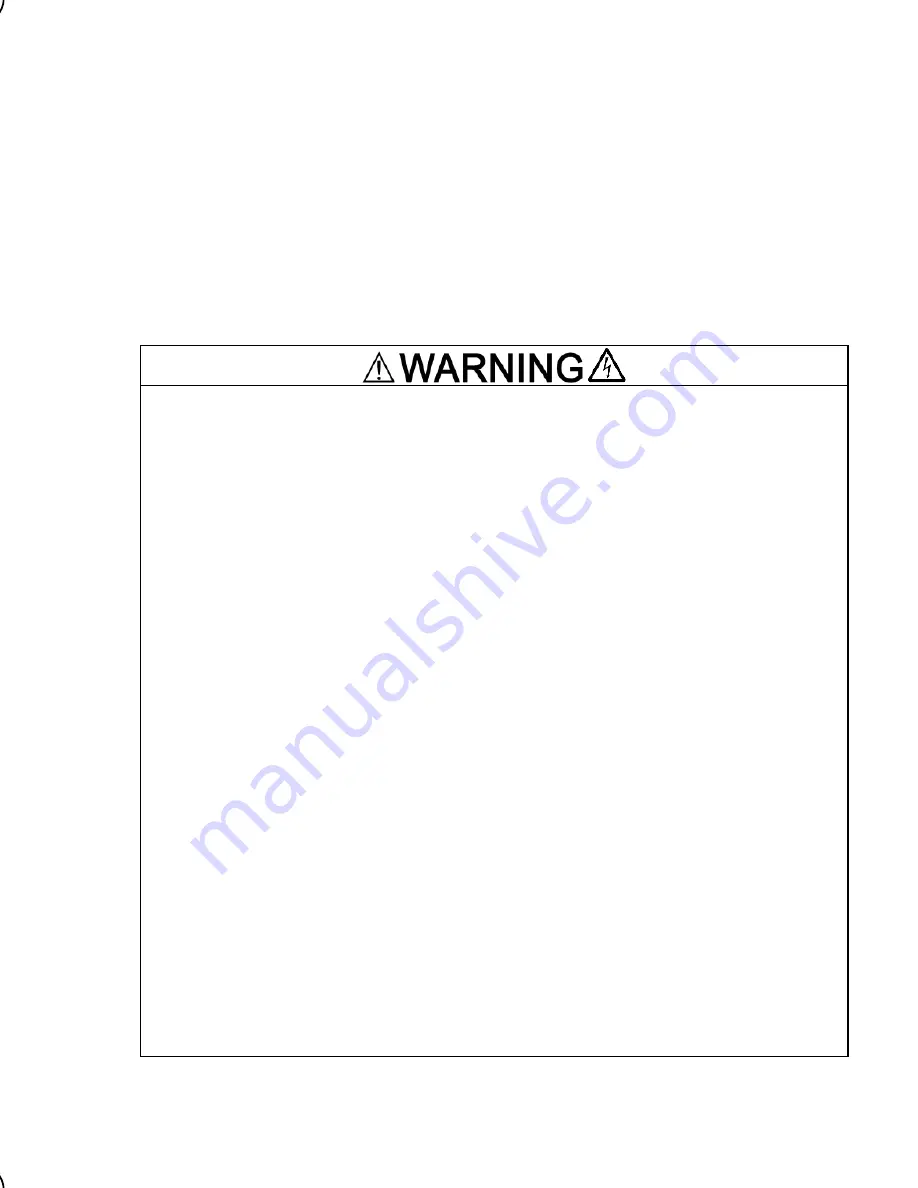
2-13
2.3.4 Wiring precautions
Follow the rules below when performing wiring for the inverter.
(1) Make sure that the source voltage is within the rated voltage range specified on the nameplate.
(2) Be sure to connect the power wires to the main circuit power input terminals L1/R, L2/S and
L3/T (for three-phase voltage input) of the inverter. If the power wires are connected to other
terminals, the inverter will be damaged when the power is turned on.
(3) Always connect the grounding terminal to prevent electric shock, fire or other disasters and to
reduce electric noise.
(4) Use crimp terminals covered with insulated sleeves for the main circuit terminal wiring to ensure
a reliable connection.
(5) Keep the power supply wiring (primary circuit) and motor wiring (secondary circuit) of the main
circuit, and control circuit wiring as far away as possible from each other.
• When wiring the inverter to the power source, insert a recommended molded case circuit
breaker (MCCB) or residual-current-operated protective device (RCD)/earth leakage
circuit breaker (ELCB) (with overcurrent protection) in the path of power lines. Use the
devices within the related current range.
• Use wires in the specified size.
Otherwise, fire could occur.
• Do not use one multicore cable in order to connect several inverters with motors.
• Do not connect a surge killer to the inverter's output (secondary) circuit.
Doing so could cause fire.
• Be sure to connect the grounding wires without fail.
Otherwise, electric shock or fire could occur.
• Qualified electricians should carry out wiring.
• Be sure to perform wiring after turning the power off.
• Ground the inverter in compliance with the national or local electric code.
Otherwise, electric shock could occur.
• Be sure to perform wiring after installing the inverter body.
Otherwise, electric shock or injuries could occur.
• Ensure that the number of input phases and the rated voltage of the product match the
number of phases and the voltage of the AC power supply to which the product is to be
connected.
Otherwise, fire or an accident could occur.
• Do not connect the power source wires to output terminals (U, V, and W).
• Do not connect a braking resistor to between terminals P (+) and N (-), P1 and N (-), P (+)
and P1, DB and N (-), or P1 and DB.
Doing so could cause fire or an accident.
















































